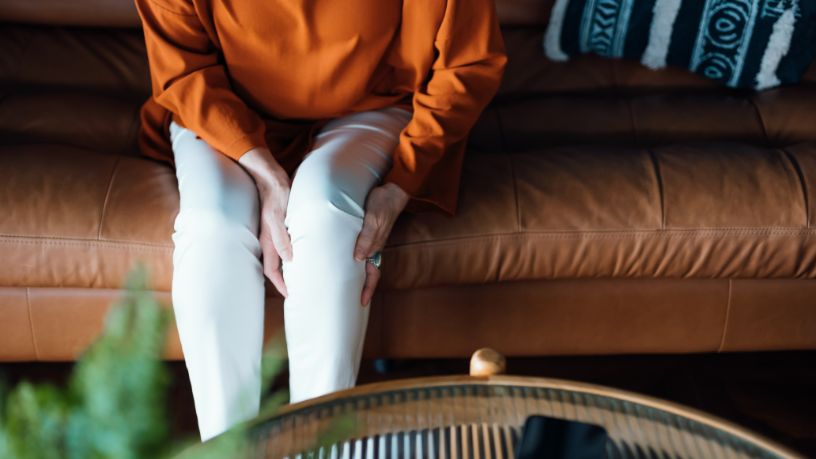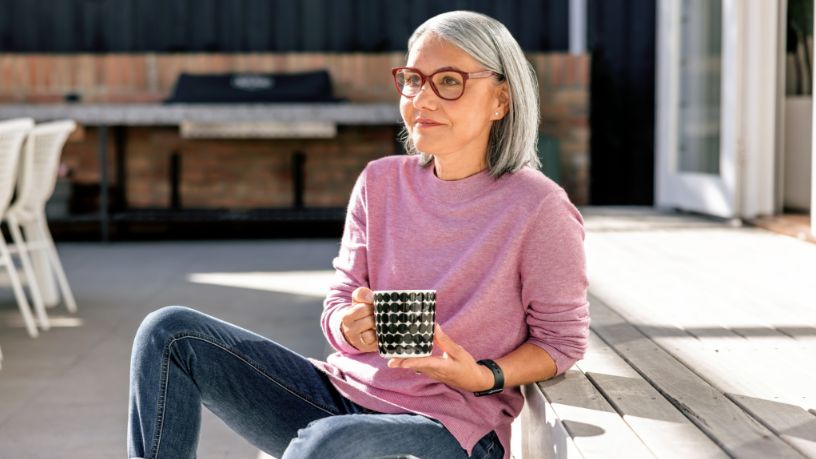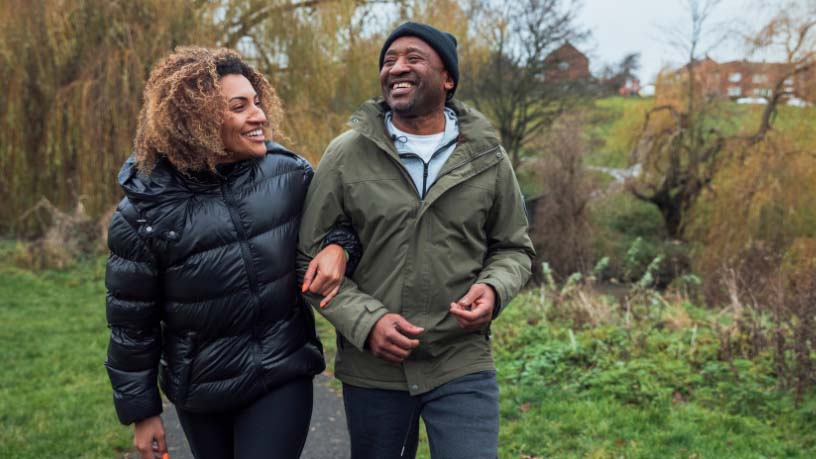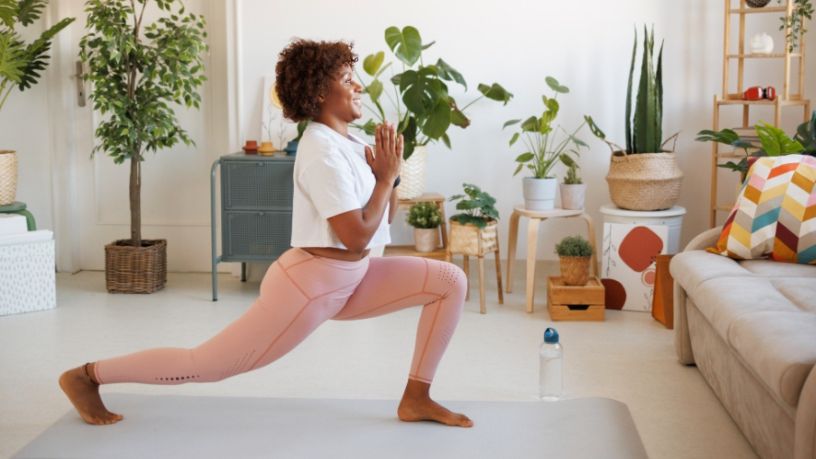Knee pain can affect anyone, and may be the result of work, lifestyle or health conditions.
Key takeaways
Managing knee pain begins with understanding its exact cause and symptoms.
Learn the difference between front, back, inner, outer and general knee pain, plus conditions associated with each.
Knee pain can affect anyone at any age. You may experience a meniscus tear or ACL injury playing sports. You might develop osteoarthritis as you get older. Or you could be living with rheumatoid arthritis.
Specific conditions can also affect specific areas of your knee. Here, we look at 5 different types of knee pain plus the potential causes of each.
1. Front knee pain
Also known as ‘anterior’ knee pain, this is associated with pain in and around your kneecap.
The pain may come from the kneecap itself or from the tendons that attach the muscles to the bones of the knee. It may feel dull and aching, or sharp or shooting. It usually worsens when you stand up, sit for a long time, squat, kneel, use stairs or run downhill.
Conditions associated with front knee pain
Patella tendinopathy
Also known as ‘jumper’s knee’, this condition is common in athletes. It’s caused by wear and tear in the tendons around the kneecap, often from overuse and stress over time. It can also lead to inflammation (tendonitis). Pain might occur when you’re active or as a continuous, dull ache.
Infrapatellar fat pad syndrome
Sometimes called Hoffa’s syndrome, this occurs when the fat pad below your kneecap gets pinched between your kneecap and thigh bone. It’s typically caused by over-straightening your leg repeatedly or standing for long periods.
Bursitis
Also known as ‘housemaid’s knee’ or ‘clergyman’s knee’, this condition results in inflammation in the area that cushions the kneecap. It can be caused by frequent kneeling, overusing your knee, suddenly increasing your sports training, being overweight or living with a chronic condition like rheumatoid arthritis or gout.
Chondromalacia of the patella
This is a condition where the cartilage under the kneecap softens and breaks down.
Osgood-Schlatter disease and Sinding-Larsen-Johansson disease
These conditions mostly occur in very sporty teenagers. They cause pain and tenderness just below the kneecap, at the top of the shin bone.
2. Back knee pain
Also known as ‘posterior’ knee pain, this pain may be accompanied by swelling behind your knee due to a build-up of excess fluid, which can extend into your calf and even grow large enough to prevent you bending your leg.
It’s important to see a doctor right away if you experience pain behind your knee or a swollen, tender calf. This can also be caused by a clot in your leg, known as deep vein thrombosis (DVT), which requires urgent treatment.
Condition associated with back knee pain
A fluid-filled popliteal cyst can develop in the shallow area at the back of your knee. It’s often linked to other knee conditions, including osteoarthritis, rheumatoid arthritis, cartilage injuries and inflammation. Impact to the front of the knee can also cause it.
Swelling may come and go, or grow or shrink over time. A very large cyst may stop you from fully straightening your leg.
Popliteal cysts often get better without treatment, but they can burst. If yours bursts, you may hear a pop and feel a warm sensation spreading down your calf. You may also develop redness or bruising anywhere from the back of your knee to the top of your foot. If this happens, see your doctor to eliminate the possibility of a blood clot.
Member Health Programs
Discover health cover that's right for you with a range of personalised programs and services designed to support your health and wellbeing.
3. Inner knee pain
Also known as ‘medial’ knee pain, this pain occurs over or just below the inner-leg side of your knee.
The pain may get worse when you bend and straighten your leg. You may also feel like your knee is about to give way, lock or catch when you bend your leg.
Conditions associated with inner knee pain
Medial collateral ligament (MCL) injury
Stretching or tearing your MCL causes pain that usually comes on immediately after the injury, and may be accompanied by swelling. The pain may be focused on the mid-point of the knee joint. You may also feel like your knee is going to give way.
Pes anserinus syndrome
This type of bursitis occurs when the area between your shinbone and the tendons of the hamstring muscle become inflamed. Pain often gets worse when you repeatedly bend your leg. You may also experience pain at night, from one leg pressing on the other. Slight swelling may occur. Many people with pes anserine pain also have osteoarthritis.
Medial plica syndrome
This occurs when a small fold of tissue inside your knee becomes inflamed. It tends to come on when you suddenly become more active, and it causes strong pain across the inside of the knee. Your knee may also catch or click when you bend your leg.
4. Outer knee pain
Also known as ‘lateral’ knee pain, this pain occurs on the outside of your leg, around your knee or up to your thigh.
The pain may come from damage inside the knee itself, or from swelling in the area that connects your hip and knee. The pain may be dull and aching or sharp and localised. You may have swelling, or your knee may click or lock.
Conditions associated with outer knee pain
Iliotibial band syndrome
Common in runners and cyclists, this condition is caused when the area that runs along the outside of your leg, from your hip to the bottom of your thigh bone to below your knee, becomes sore and inflamed. Pain may occur over the outside of your knee or more sharply in one area. It may come on when you repeatedly bend and straighten your leg.
Lateral collateral ligament (LCL) injury
This is caused by stretching or tearing the area that connects your thigh bone to your shin bone, causing pain over the outside of the knee, which may focus on the mid-point of the knee joint. When you injure your LCL, you may feel like your knee is going to give way. It may cause swelling around your knee or pins and needles in your foot. Pain may worsen when walking or running.
5. Knee pain associated with more than one area
You may feel pain in more than one area of your knee when it arises from structures deep within the centre of your knee joint or kneecap. This may be due to one of the following conditions:
- osteoarthritis of the knee
- anterior cruciate ligament (ACL) injury
- posterior cruciate ligament (PCL) injury
- patellofemoral pain syndrome (PFPS)
- meniscal tear.
Managing knee pain
Treating knee pain will vary depending on your condition, symptoms and health background.
For mild pain or injury, using an ice pack, resting your leg and taking anti-inflammatory painkillers such as ibuprofen may be all that’s needed. However, more serious pain may require medical attention.
To stop knee pain from recurring, you might need to make a few lifestyle and exercise changes, such as losing weight, exercising properly, warming up and cooling down from exercise and wearing the right shoes.
Talk to your doctor, physio or personal trainer for more information.
Resources
The Australian Physiotherapy Association can help you find a physio near you.
Chronic Pain Australia provides education and support for those living with chronic pain.
Musculoskeletal Health Australia provides information and support for people living with arthritis and musculoskeletal conditions. Visit their website or call them on 1800 263 265.

At Bupa, trust is everything
Our health and wellbeing information is regularly reviewed and maintained by a team of healthcare experts, to ensure its relevancy and accuracy. Everyone's health journey is unique and health outcomes vary from person to person.
This content is not a replacement for personalised and specific medical, healthcare, or other professional advice. If you have concerns about your health, see your doctor or other health professional.
You might also like...
Knee pain: A basic guide
Your knees are the largest joints in your body. They’re also among the most accident prone. Get to know the basics of knee pain.
Knee osteoarthritis: The basics
Osteoarthritis is a joint disease that commonly affects the knee, so make sure you know the symptoms, causes and treatments that are available.
7 things I wish I knew before knee surgery
Knee surgery is a major operation that may require months of intensive recovery. Discover 7 common insights from those who’ve done it.
5 best exercises to strengthen your knee after surgery
If you’ve had knee surgery, support your recovery with these 5 physiotherapist-approved exercises. Regain strength and mobility safely at home.





